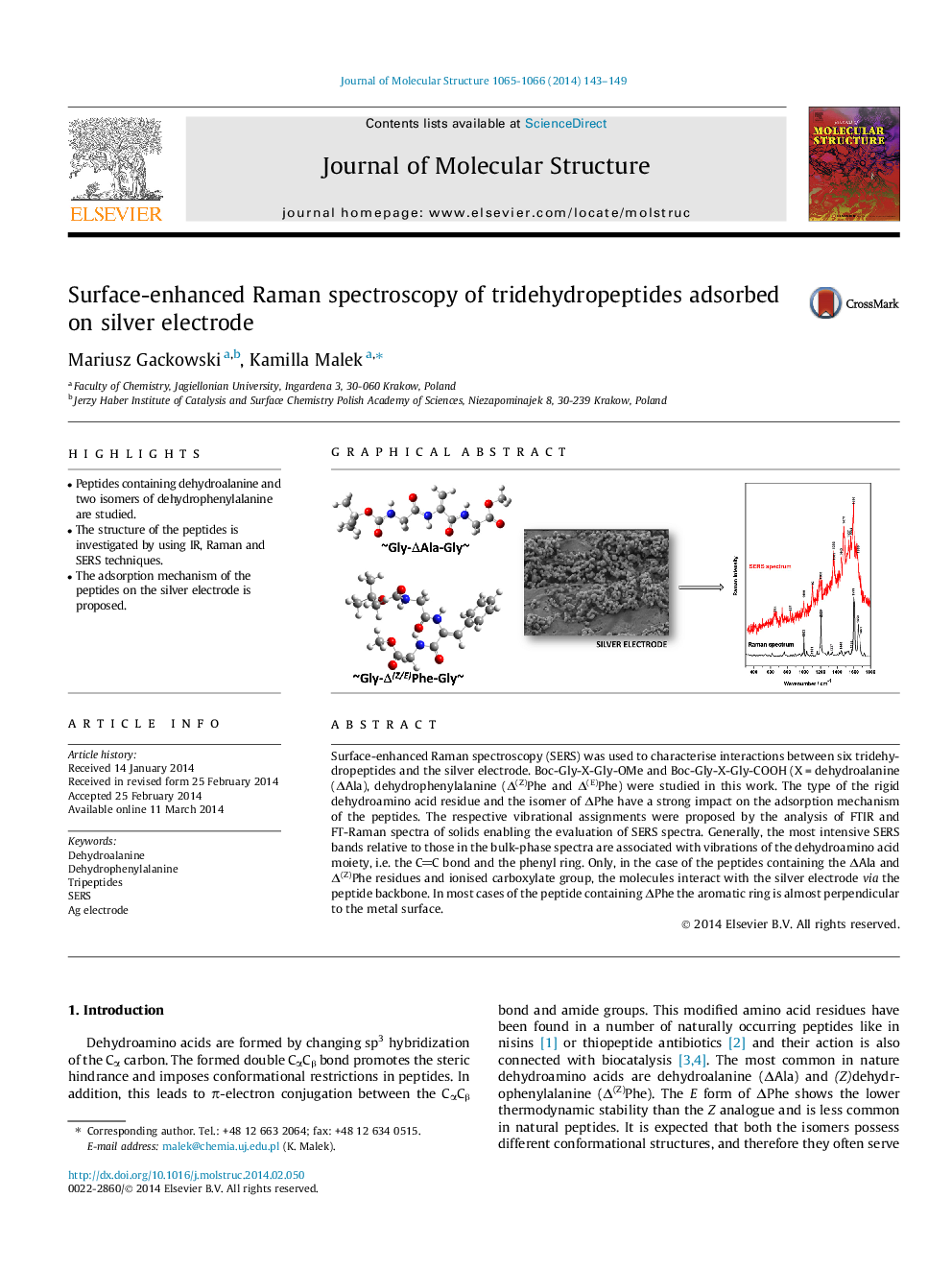| Article ID | Journal | Published Year | Pages | File Type |
|---|---|---|---|---|
| 1409346 | Journal of Molecular Structure | 2014 | 7 Pages |
•Peptides containing dehydroalanine and two isomers of dehydrophenylalanine are studied.•The structure of the peptides is investigated by using IR, Raman and SERS techniques.•The adsorption mechanism of the peptides on the silver electrode is proposed.
Surface-enhanced Raman spectroscopy (SERS) was used to characterise interactions between six tridehydropeptides and the silver electrode. Boc-Gly-X-Gly-OMe and Boc-Gly-X-Gly-COOH (X = dehydroalanine (ΔAla), dehydrophenylalanine (Δ(Z)Phe and Δ(E)Phe) were studied in this work. The type of the rigid dehydroamino acid residue and the isomer of ΔPhe have a strong impact on the adsorption mechanism of the peptides. The respective vibrational assignments were proposed by the analysis of FTIR and FT-Raman spectra of solids enabling the evaluation of SERS spectra. Generally, the most intensive SERS bands relative to those in the bulk-phase spectra are associated with vibrations of the dehydroamino acid moiety, i.e. the CC bond and the phenyl ring. Only, in the case of the peptides containing the ΔAla and Δ(Z)Phe residues and ionised carboxylate group, the molecules interact with the silver electrode via the peptide backbone. In most cases of the peptide containing ΔPhe the aromatic ring is almost perpendicular to the metal surface.
Graphical abstractFigure optionsDownload full-size imageDownload as PowerPoint slide
